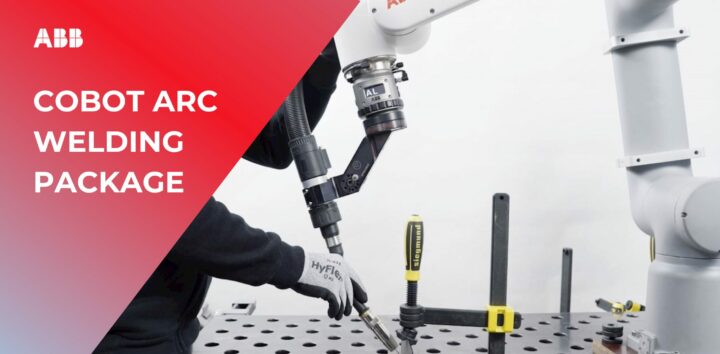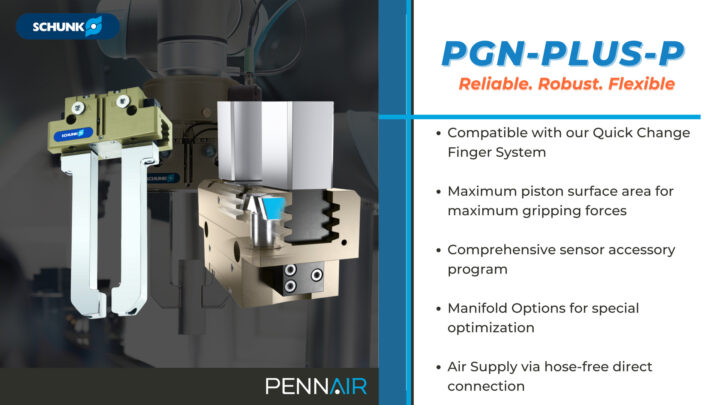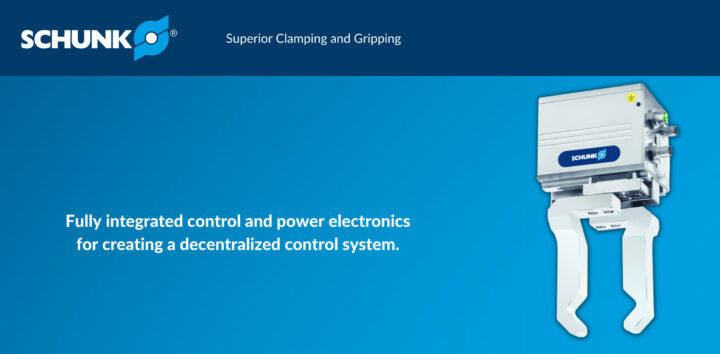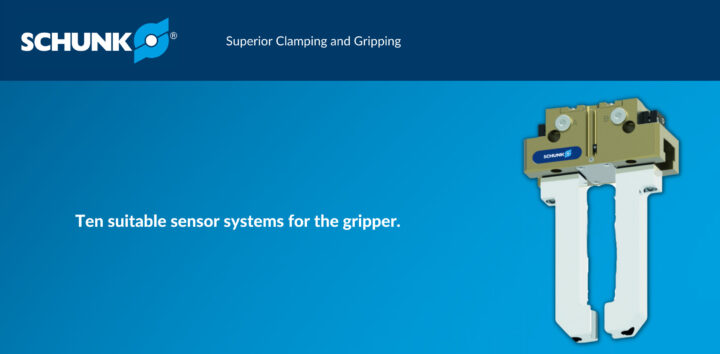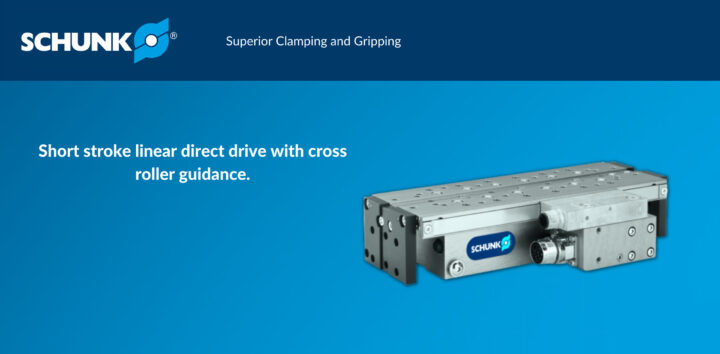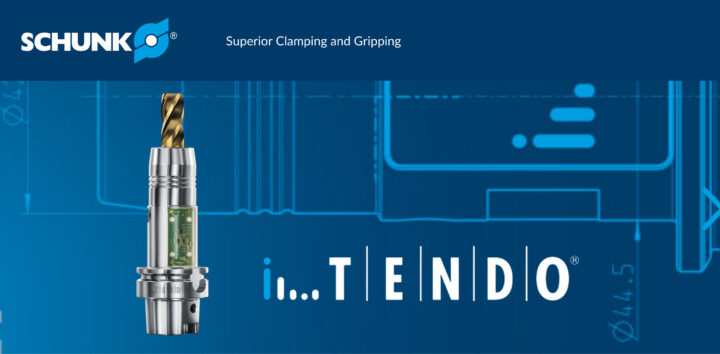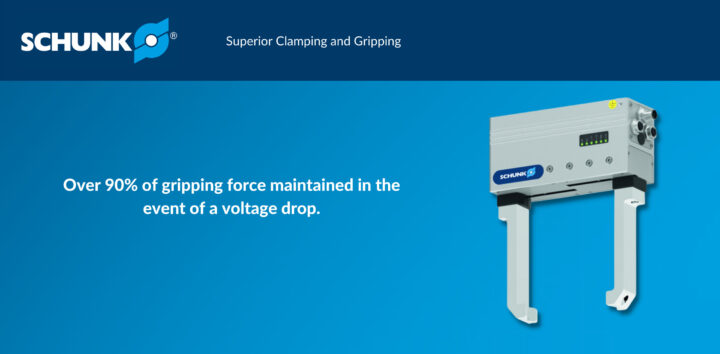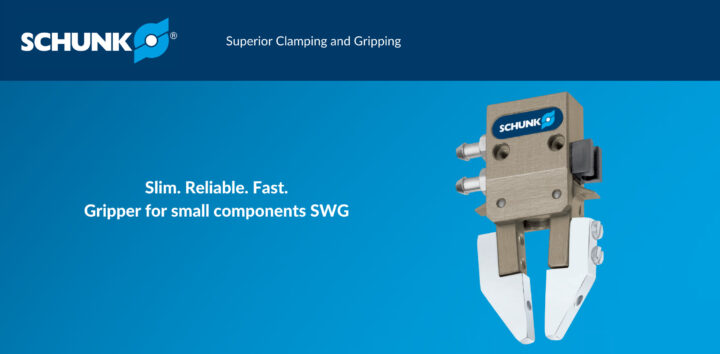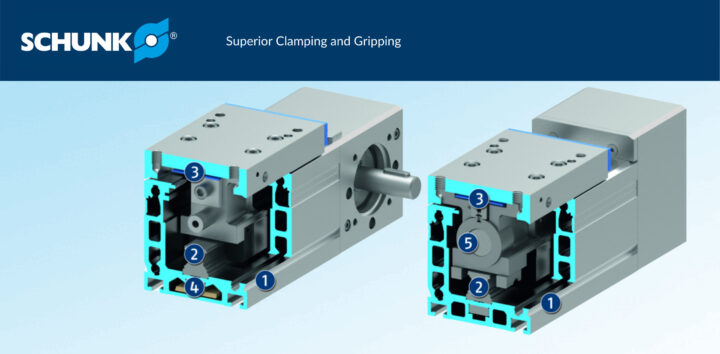With a class-leading reach of 950mm, and the ability to handle payloads up to 5kg, GoFa loves demanding, repetitive tasks. For maximum safety, it also features intelligent sensors in every joint that stop the robot within milliseconds if contact is detected.
Tag: robotics
ABB’s Cobot, GoFa CRB 15000
With a class-leading reach of 950mm, and the ability to handle payloads up to 5kg, GoFa loves demanding, repetitive tasks. For maximum safety, it also features intelligent sensors in every joint that stop the robot within milliseconds if contact is detected.
SCHUNK’S MPG-plus
Universal 2-finger parallel gripper with permanent lubrication, high gripping force, and high maximum moments due to the use of a multi-tooth guidance.
SCHUNK’s EGL
Servo-electric 2-finger parallel gripper with sensitive gripping force control and long stroke. It is a universally applicable electric 2-finger parallel gripper for a wide range of parts in clean to harsh ambient conditions that’s highly flexible. The electrical control of the gripper is carried out by the fully integrated control and power electronics. Hence, the module does not require any additional external control units.
A wide range of interfaces are available for communication, such as PROFINET, PROFIBUS-DP or CAN. This enables the assembly of industrial bus networks and ensures simple integration into existing control concepts. We offer various cables for transmission of power supply and data communications.
Base jaw interface:
SCHUNK’S JGP-P GRIPPER
Schunk’s JGP-P is a universal 2-finger parallel gripper with T-slot guidance and the optimum price-performance ratio. Optimum standard solution for many fields of application. Universal application in clean and slightly dirty surroundings in machine building and plant building industry, assembly and handling as well as the automotive industry.
The Advantages:
A firm focus on the essentials for maximum profitability
Sturdy T-slot guidance for the precise handling of different workpieces
Comprehensive sensor accessory program for versatile querying possibilities and stroke position monitoring
Maximum piston surface area for maximum gripping forces
Wedge-hook design for high power transmission and synchronized gripping
SCHUNK’S ELB
Integrated motor and measuring system in the axis
minimizes interfering contours and space requirements
Can be fitted with absolute stroke measuring system
Less programming effort and time saving when commissioning and in operation
High dynamics for shorter cycle times
therefore a high productivity is achieved
Almost no wear parts
for a long service life
Pretensioned junction rollers
That means absolutely scope-free
Standardized mounting bores
for numerous combinations with other components from the modular system
Optional pneumatic or electric holding brake as rod lock
for process reliability during system downtime
Optionally certified safety devices according to SIL2/PLd
with the HIPERFACE® and DRIVE-CliQ interfaces for applications with high standards in the area of machine safety
SCHUNK’s iTendo
With the iTENDO it was possible to combine the excellent features of the TENDO hydraulic expansion technology with the possibility of digital process monitoring. If one looks into the process starting from the place of metal cutting, the iTENDO is the first non-wear part, “closest-to-the-part,” and therefore it is predestined for signal acquisition. Digitalization is considered to be the greatest challenge in the manufacturing industry. However, it also offers chances for the companies in creating processes more precise, reliable, and faster. The precondition for this, is a maximum process stability achieved by intelligent solutions and components that could recognize unforeseeable instabilities, and could intervene in real time. The resulting effects are a minimization of rejects, a noticeable reduction of production times, as well as an important increase in quality and efficiency – even in the case of small batch sizes. With the new iTENDO – the first intelligent toolholder on the market – SCHUNK is setting a milestone when it comes to digitalization in the metal cutting industry. Due to the real-time capable data communication, SCHUNK offers for the first time an autonomous process optimization in the form of a toolholder.
SCHUNK EGI
Servo-electric 2-finger parallel gripper with sensitive gripping force control and long stroke. It is versatile, highly flexible, and great for clean environments.
The Advantages:
Gripping force control for the delicate gripping of sensitive workpieces
Long and freely programmable stroke for flexible workpiece handling
Almost complete gripping force maintenance with minimal brake retardation for a high process reliability
A browser-based integrated webserver for easy and intuitive commissioning, parameterization, and functional test of the gripper (applies to PROFINET and EtherNet/IP only)
Fully integrated control and power electronics for creating a decentralized control system
Connectors in industrial standard for easy electrical connection
SCHUNK’s Angular Gripper SWG 50
For universal use in clean and slightly dirty environments. Suitable for applications that require a space-optimized gripper Arrangement. Advantages – Your benefits: Slim design allowing the grippers to be arranged in a row
Spring-supported gripping force maintenance holds the
workpiece even in case of a loss of pressure
Wedge-hook design for high power transmission and synchronized gripping
Light and compact design for space-saving handling without interfering contours
Monitoring via electronic magnetic switches a space-saving feature in a slot in the housing
SCHUNK HSB Beta Series
Optional toothed belt drive for high acceleration and speed or spindle drive for precise positioning given high drive forces.
Adaptable drive motor
Optional belt or spindle driven
Various guide options
Cost-effective basic version with basic functions
Compact dimensions
Integrated cover tape
The slide is driven by a toothed belt or a ball screw spindle and precisely guided by a (double) profiled rail guide. The cover band runs through the slide and covers the drive and guidance. The servomotor is usually connected to the profile via the drive shaft.

